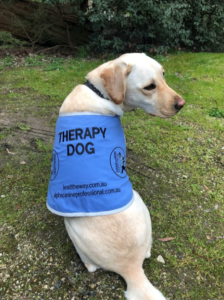Do you have a fear that’s holding you back? Overcoming Fears
laura on 20/06/2024

People can be scared of many different things, such as dogs, airplanes, needles or insects. And the degree to which we’re fearful of these things can also vary. For example, I personally am scared of birds (this is also known and ornithophobia). Yes, I know…terrifying. However, it’s a mild fear, as this does not stop me from walking through a park where I know birds will be present, or walking down the sidewalk when I see them on the footpath in front of me. I may not like it, but it doesn’t interfere with my life. Unfortunately, this may not be the case for everyone, because, as mentioned above, the degrees of fear can vary. Many individuals will go out of their way to avoid that which causes fear. Some may never go on a desired holiday, or see family interstate due to being frightened of flying. Others may avoid going outside in spring and summer due to their fear of bugs. In these circumstances, seeing a psychologist can be helpful, in order to help tackle this issue.
One way to do this, and my preferred way, is through systematic desensitisation. This involves gradual exposure to that which causes fear and discomfort. To start off, I work with my clients to develop a hierarchy, starting with what causes the least amount of fear, or anxiety, and building up to that which causes the most fear. It’s important that clients follow these steps in an environment that is safe and predictable. Let’s use fear of dogs as an example. Depending on the severity, step one may be just talking about dogs. Believe it or not, this alone can be enough to cause uneasy feelings for some. I ask my client to rate their anxiety level for step one (1-10). The idea is that the more the client is exposed to this step, they will become desensitised, leading to their self-rating to drop over time. Once the client is comfortable and essentially bored with this step, we then move onto step two. Step two may involve looking at pictures of dogs. For example, I would advise against going to a dog park to observe dogs there, as this is an unpredictable environment, as we cannot control or stop a dog from running up to the client, which could lead to more distress. Moving, on, step three may involve looking at videos of dogs. Once again, the client would continue to rate their level of discomfort, and eventually, once this drops to an extremely comfortable level, we move on to the next step. Eventually, the aim and goal would be to have the client comfortably sitting in a room with the dog, and even interact with a dog.
In addition to a hierarchy, it is beneficial to work on breathing strategies in sessions as well. These help ease some of the discomfort within each step. Learning to challenge unhelpful and unrealistic thoughts via CBT (Cognitive Behavioural Therapy) is also very helpful, as often, we overestimate the level of threat, and are more fearful of certain things than necessary.
If an individual has an animal-related fear, such as the above, it can be beneficial if the psychologist they are working with utilises animal-assisted therapy. Therapy dogs are generally quite well-trained and love people. Exposure to therapy animals is done in a safe and predictable environment, and it’s reassuring to know that the specific dog is friendly, and that the handler (in this case, the therapist), has an understanding of the client’s fear, and can work with the client in a manner in which they are comfortable. As opposed to attempting to interact with a dog at a dog park, or on the street, which is less predictable. However, it is important to ensure that the psychologist and therapy animal you choose to work with are suitable for your own level of fear, as some dogs can be more excitable than others and may not be suitable for someone who has trouble even being in the same room as a dog.
*blog featured image: <a href=”https://www.vecteezy.com/free-vector/phobia”>Phobia Vectors by Vecteezy</a>
If you think working with a psychologist would help you tackle your fear, give us a call to find a psychologist that is suitable for you. Please note that Johana is able to assist with clients who have a moderate fear of dogs, as Luna is an excitable dog.
This blog was written by Johana Xanthopoulos, Clinical Psychologist at Your Mind Matters.
Johana works with a range of clients, including children and adolescents. Working previously in an early childhood intervention setting, Johana has skills and experience working with a range of childhood disorders, particularly Autism Spectrum Disorder. Johana’s other special interests include anxiety and depression. She has also completed Animal Assisted Therapy training with her dog Luna, who you may see in our office.
Johana is fluent in English and Greek.
- Category: Uncategorized
- Tag: #phobias

